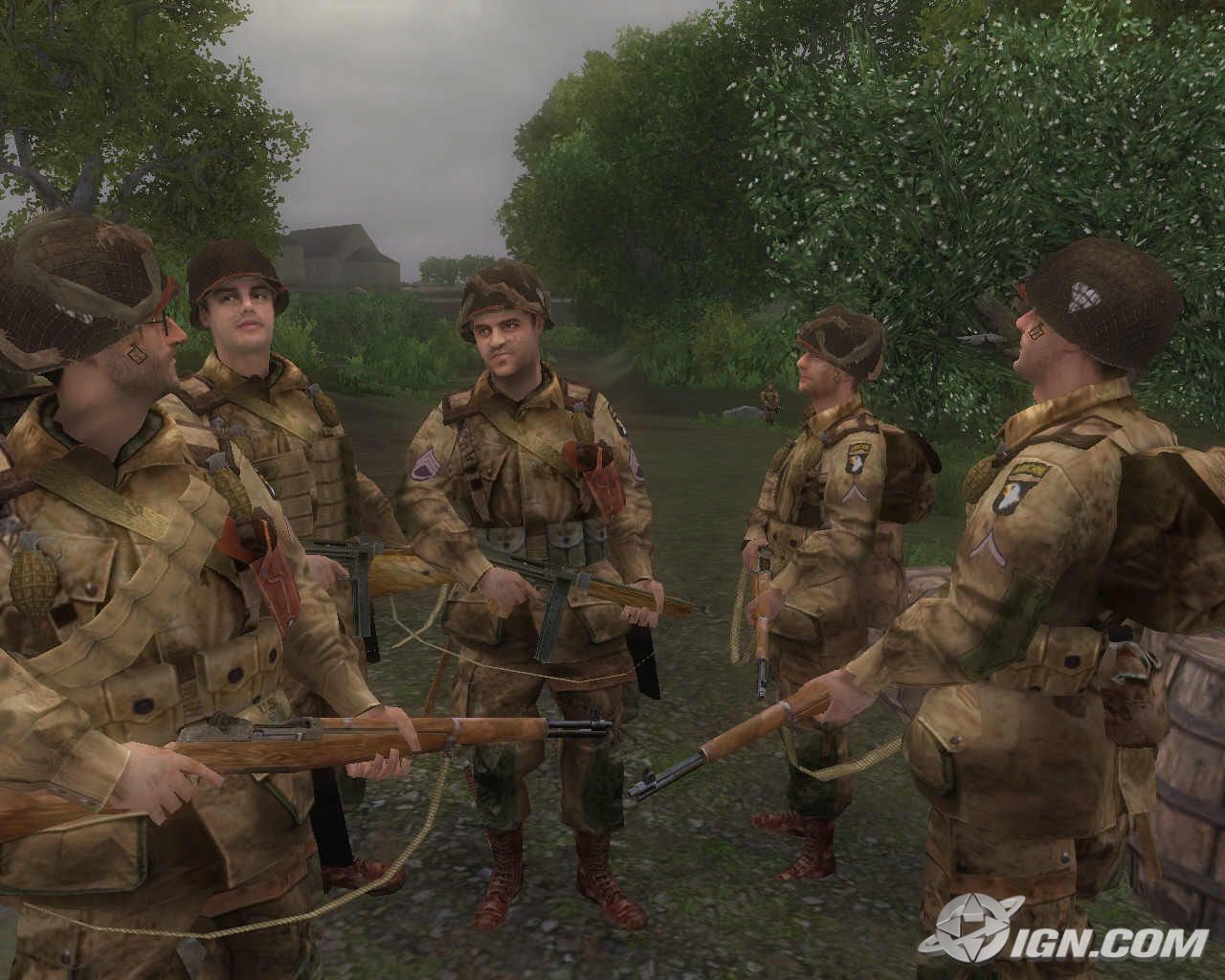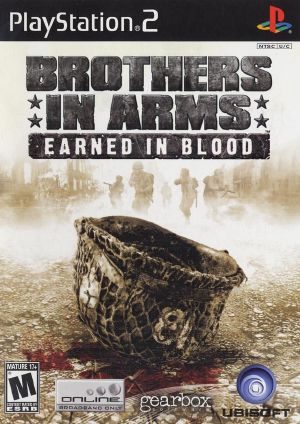
Thankfully, realism only goes so far in Brothers in Arms if a squad member bites it during a mission (meaning your success was "earned in blood"), you're given the option to resurrect him after completing the stage. Less patient gamers may not have the attention span necessary to progress, especially when they realize that there are no health power-ups. A run-n-gunner this ain't strategy and tactical creativity are as essential as a rifle in Brothers in Arms. Later on when confronted by several enemy squads (who are noticeably smarter than the original game), it's necessary to utilize a bird's-eye view of the battlefield (presented like a real-time strategy game) to plan your next move. Early on, victory is as simple as calling for suppressing fire (which pins down the enemy), moving around to the side of the Germans' position, and assaulting the exposed flank.

Skirmishes unfold realistically when Red and company sight Germans, your soldiers take cover, ducking behind walls, rocks, and other obstacles. Your comrades will also spread out and stick to your six when prompted by the D-pad, which cuts down on the usual NPC tendencies to run in circles and act like knuckleheads. Want your boys to take up a defensive position? Need some covering fire? The L1 button, in conjunction with other button combinations, is all you need.
#Brothers in arms earned in blood videos full#
Hartsock can give orders to his men through a surprisingly effective "command ring" that changes based upon context, much like the one in the tactical strategy classic Full Spectrum Warrior. The D-Day invasion of Normandy, horrifically portrayed in the film "Saving Private Ryan," was just the tip of the iceberg for Hartsock and his fellow soldiers the Nazis still control most of France, and they aren't going to oust themselves.īrothers in Arms stands out among the dearth of FPSes largely on the strength of its innovative squad dynamics. Joe "Red" Hartsock, a newly promoted grunt serving in the United States Army during World War II. Like its predecessor (which was released a scant seven months earlier), Earned in Blood forces us to be team players. Early 2005 introduced the gaming public to an excellent example of this level of teamwork in action, Brothers in Arms: Road to Hill 30. Tightly regimented, disciplined units working as one are most successful in the art of war loners usually don't last long. You may be surprised to learn that real-life wars are not won through the efforts of a single man, as many video games may lead you to believe. Leading the charge for this approach, aside from every Vietnam game ever made, are gritty, downbeat World War II testaments like Call of Duty and Brothers in Arms. On the other side of the coin are games that embrace the old adage, "War is hell." Friends can die at any moment, the enemy is everywhere, and all a soldier has is the guy next to him.

There's usually a lot of flag-waving and patriotism scattered about, sometimes leading to a bizarre conclusion where your character beats the hell out of terrorist/madman Osama Bin Laden. Games such as Medal of Honor depict a lone super soldier (perhaps with a few token squadmates) valiantly muscling their way through impossible odds to defend truth, justice and democracy.

It occurs to me that pretty much all video games based on real-life conflicts take one of two different stances.
#Brothers in arms earned in blood videos Pc#
Buy 'BROTHERS IN ARMS: Earned in Blood': Xbox | PC | PlayStation 2


 0 kommentar(er)
0 kommentar(er)
